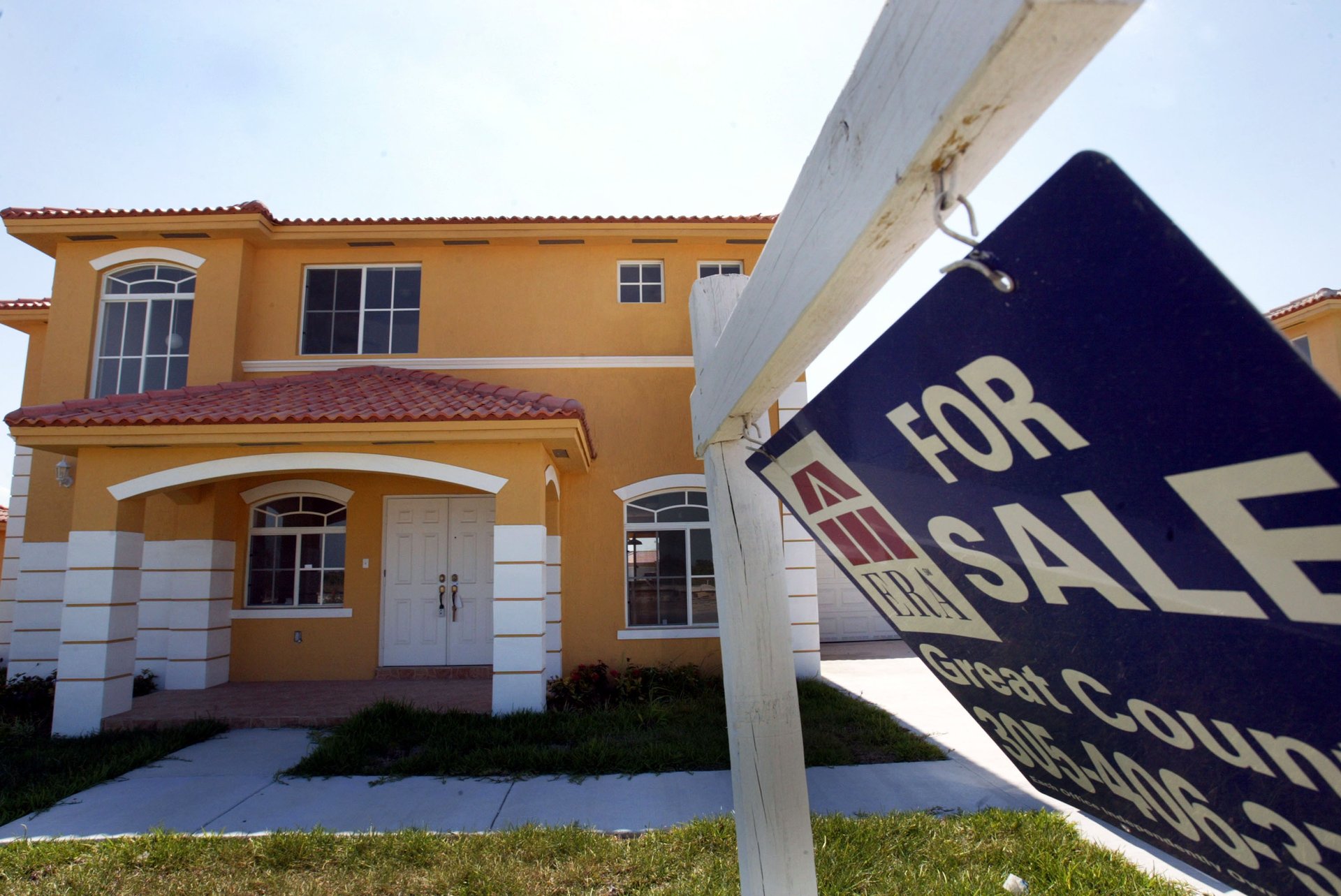🌎 Welcome to housing purgatory
Plus: Stagflation nation?

Joe Raedle/Getty Images
Good morning, Quartz readers!
Suggested Reading
Here’s what you need to know
Call it a trade-off. A top Trump adviser has floated the idea of stripping the much-scrutinized “revenge tax” from the GOP’s megabill if more trade deals are signed.
Related Content
Core values. Nvidia stock closed at a record high as the company continues to shrug off any China-related losses, showing that it’s still firmly in control — and its comeback isn’t over.
Bot to the future. Jensen Huang, Nvidia’s CEO, said that he sees a future with “billions of robots” (which includes self-driving cars) and that they’re the company’s other multibillion-dollar bet.
Microsoft’s Azure thing. The company got a price hike from Wedbush thanks to its rising revenue from Azure and Copilot, which analysts think could add $25 billion by FY26.
Charging into last place. Tesla’s sales have fallen in Europe for the fifth straight month — they’re down 28% year over year — even while the broader EV market surges.
A barrel of surprises. Despite the Iran-Israel war, gas prices will stay low this summer, thanks to energy market efficiency, improved data, and better global dispersion.
Location, location, liquidation
Remember when homeownership was the American dream? Well, in some corners of the country, it’s starting to look more like a recurring financial nightmare. A growing number of U.S. homeowners are slipping underwater — meaning they owe more on their mortgages than their homes are currently worth.
The numbers are still relatively small, but the trend is sharpest in once-scorching markets such as Cape Coral, Florida (7.8% underwater), San Antonio, Texas (4.3%), and Austin, Texas (4.2%) — all pandemic darlings turned cautionary tales. Fueled by remote work, low rates, and a YOLO real estate attitude, these boomtowns saw prices skyrocket. But now the air’s coming out of the bubble, and the equity is evaporating.
Real estate agents are already seeing the panic set in. One Atlanta buyer, according to The Wall Street Journal, has listed his house for $15,000 less than he paid three years ago not because he has to sell, but because he’s afraid of falling into the red. His logic? It’s better to take a loss now than drown later — homeownership as preemptive damage control.
Underwater status isn’t just a financial inconvenience — it’s a lifestyle lock-in. Can’t refinance, can’t sell without coughing up cash, can’t move for that new job or better school district. It’s a housing market purgatory. And while this isn’t 2008 déjà vu (credit standards are tighter, and overall equity is strong), it does expose vulnerabilities, particularly among recent buyers with FHA and VA loans, who often put little down and now have even less wiggle room.
No one’s calling for a foreclosure flood yet. Most borrowers can still make payments, and there’s no mortgage crisis on the immediate horizon. But with home values sliding and white-collar layoffs piling up, the psychological toll is mounting. The dream of mobility — up, out, onward — is colliding with the reality of debt, depreciation, and 7% mortgage rates. Quartz’s Catherine Baab has more on how underwater mortgages are locking Americans in place.
Rates of wrath
JPMorgan just poured cold water on any economic hot takes. In a new forecast, the bank slashed its 2025 GDP estimate from 2% to 1.3%, and it’s pointing the finger squarely at President Donald Trump’s trade policy. The tariffs — a 10% blanket import tax that has climbed to 55% for countries such as China — may be “reciprocal” in name, but they’re inflationary in effect. The result? A rising risk of stagflation — the economic equivalent of slamming the brakes and the gas at the same time — and a slow crawl toward recession.
The bank now puts the odds of a 2025 downturn at just over 30%, saying, “We continue to see heightened risks of a recession.” That’s not doom-and-gloom territory, but it’s enough to make the Fed sweat — and delay. JPMorgan expects just one rate cut this year (in December), compared with the two that markets were hoping for, and then expects three cuts in quick succession by spring 2026.
The Trump administration’s trade agenda — part ideological, part electoral — could also take a chunk out of global growth while inflating prices at home. Add to that a projected $3.8 trillion increase in the national debt, and it’s no wonder JPMorgan is flashing warning signs across bond and currency markets. Growth slows, prices rise, and central bankers develop stress-induced tics.
Emerging market currencies may outperform the dollar as investors hunt for economies that aren’t trying to self-sabotage. Meanwhile, bond yields are set to climb as demand weakens and Washington leans ever harder on the borrowing button. And yet JPMorgan still sees upside for U.S. stocks. The AI bull run, consumer spending, and momentum-driven strategies are keeping markets buoyant even as the macro picture teeters. In 2025, Wall Street’s best trade might be denial. Quartz’s Niamh Rowe has more on why recession risk could be the new baseline, not a headline.
